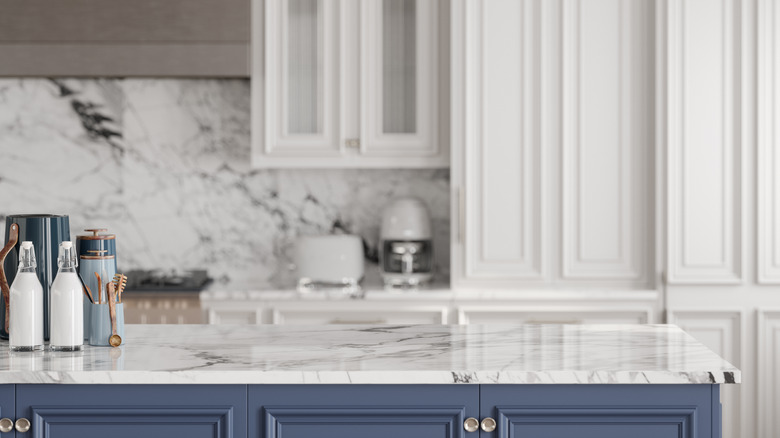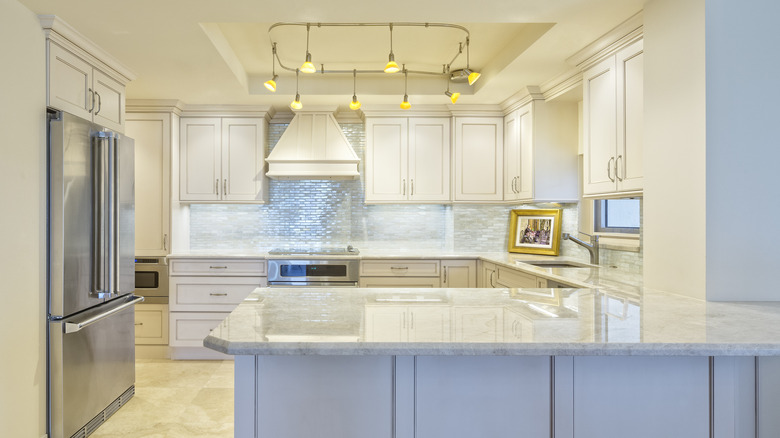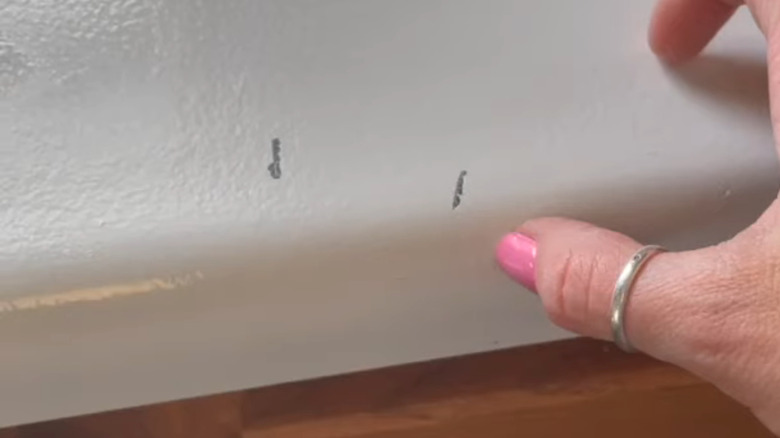The Hidden Downsides To Painting Laminate Countertops
If you have old, outdated laminate countertops but no wiggle room in your budget to upgrade them, then painting might seem like a great, cost-effective alternative. All you need to do is invest in some acrylic paint and a top coat, and you could be left with the look of granite countertops for way less. While this approach might extend the life of your laminate countertops, there are some considerable downsides to painting you should be aware of before taking the plunge.
First and foremost, while painting your countertops, your kitchen will be out of commission. This might seem fine if you can't use it for a day or two, but you will need to let the paint and sealant cure for upwards of 30 days, making things inconvenient and difficult. Secondly, it's a temporary solution. While the paint job could last for years if done correctly, you will eventually get chips and scratches, even if you're super careful. That's because paint isn't an inherently durable substance. This will force you to either repaint them once again or replace them entirely with a new counter. Here is a deeper dive into the drawbacks of painting your laminate countertops.
You won't be able to use your kitchen for some time
In theory, painting the countertop should only take a few hours. After all, you're just rolling on paint. However, it takes much longer than that due to the drying time. You need to allow each layer to properly dry and cure before adding the next one, including the primer, coats of paint, and top coat. Once finished, you need to allow the sealant to cure fully, which can take upwards of a month. This means you can't use your kitchen for quite some time.
The first thing you need to allow it to dry properly is primer. "Adequate drying time is crucial for the primer to create a strong bond with the countertop," Karina Newman, owner of iBuyers, tells Homes & Gardens. Its drying time depends on what kind you use, but it can take anywhere from several hours to a full week. Read the manufacturer's directions to know for sure. Next, you will apply your paint, which also needs to dry between coats. Once done, apply the sealant, which must cure for 7 to 30 days. This depends on what type of product you use, so again, make sure to read the directions on the can. While you can technically use your countertops during this time, adding just a little too much force or pressure on them can leave behind rings, marks, and scuffs. Because of this, it's best to wait for the full amount of time.
They will eventually chip and crack
While your painted laminate countertops can withstand years of use with the proper care and maintenance, they will inevitably chip or peel. Even if the damage isn't overtly noticeable, it will be enough to warrant continuous touch-ups over the years. The top sealing coat can wear away over time, exposing the paint underneath it and leaving it susceptible to damage. The paint can either wear away by frequent touching or rubbing or become nicked by pots, pans, or small appliances.
While you likely won't have large chips or aggressively peeling layers, you will occasionally get a couple of nicks in high-traffic areas. Those who have tried this flip recommend having the can of paint or epoxy you used on hand for quick touch-ups at the end of each month, prolonging the paint job. You can store it underneath your kitchen sink for easy access and fill in chips with a small paintbrush or Q-tip. However, since this requires constant retouching, it might not be an ideal long-term solution.


